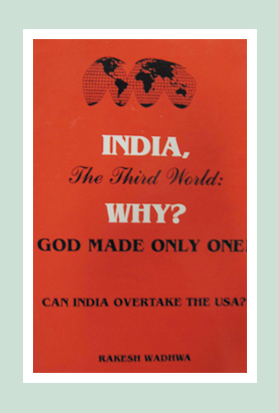What Can Control India’s Inflation?
These days, international news is bombarded with excitement over India’s double-digit growth and speculations about when (and if) the Indian economy will surpass China’s. However, the scene is quite different domestically. In India, the hot topic of
A Review of Casinos in India
Goa is the only state in India to allow both on-land and off-shore casinos. Thousands of people flock this tourist hot-spot every year, not just for the pristine beaches and relaxed lifestyle, but also for its intoxicating and
Indian Casino Industry: Can it compete with Nepal?
Nepal has emerged as one of “THE” casino hot-spots during the last decade. In fact, this South Asian country is home to the region’s oldest casino industry. The first casino in Asia was established as far back as 1968 in Nepal.
Will India Surpass Japan as the Third Largest Economy?
India is all set to become the world’s third largest economy soon, measured in terms of gross domestic product (GDP), by overtaking Japan in the next few months. At present, India is the fourth largest economy after the US,
What is the Future of India’s Casino Industry
The global casino industry is estimated to be worth more than $120 billion at present, according to PriceWaterHouse Coopers. And, when it comes to the business of gambling, Asia is definitely the fastest growing continent.
What is the Future of India’s Casino Industry
The global casino industry is estimated to be worth more than $120 billion at present, according to PriceWaterHouse Coopers. And, when it comes to the business of gambling, Asia is definitely the fastest growing continent.
Tiger Versus Dragon: Will the Indian Casino Industry Overtake Macau?
Are you wondering whether the dragon can really breathe fire when it opens its mouth? You would believe it if you read about Macau’s economic growth rate. What so fantastic about the growth? Any economy can surge for a couple of quarters, or maybe even a couple of years. Asia’s
My Paid Protectors
Violent conduct on the part of policemen is a common malice. However the question to be asked is, ‘Why do I pay these people to beat me up?’
The Commonwealth Games
It must have struck some of you; the way the media, in the middle of the commonwealth games, seemed to change its very acrimonious stance towards the government. The games went very quickly from being shame of the nation to being a cause for patriotic pride.
Construction Sight
The sight of Delhi is now the construction site. With the government scurrying around to pull off the city’s miraculous face-lift in time for the Commonwealth Games, the city has become an accumulation of construction material.
 Rakesh Wadhwa. Ever since, I was a school boy, I knew India was on the wrong path. Socialism was just not what we needed to get ahead. Government controlled our travel; government controlled our ability to buy and sell; and government controlled our freedom to move our money. My life has focused on the inherent rights people have. When I was in college, I never understood, what the governments meant by their "socialistic attitude". If people are free to buy, sell and move their capital themselves without any restrictions by state, then the welfare of people is inevitable & hence the countries they live in will become wealthy. The government has no right whatsoever, to point a finger at me or my business. I am not a revolutionary. I just want to light up my cigarette and not get nagged about it. I believe in non-interfering attitude to attain more.
Rakesh Wadhwa. Ever since, I was a school boy, I knew India was on the wrong path. Socialism was just not what we needed to get ahead. Government controlled our travel; government controlled our ability to buy and sell; and government controlled our freedom to move our money. My life has focused on the inherent rights people have. When I was in college, I never understood, what the governments meant by their "socialistic attitude". If people are free to buy, sell and move their capital themselves without any restrictions by state, then the welfare of people is inevitable & hence the countries they live in will become wealthy. The government has no right whatsoever, to point a finger at me or my business. I am not a revolutionary. I just want to light up my cigarette and not get nagged about it. I believe in non-interfering attitude to attain more. 
 The Bastiat Award is a journalism award, given annually by the International Policy Network, London. Bastiat Prize entries are judged on intellectual content, the persuasiveness of the language used and the type of publication in which they appear. Rakesh Wadhwa won the 3rd prize (a cash award of $1,000 and a candlestick), in 2006.
The Bastiat Award is a journalism award, given annually by the International Policy Network, London. Bastiat Prize entries are judged on intellectual content, the persuasiveness of the language used and the type of publication in which they appear. Rakesh Wadhwa won the 3rd prize (a cash award of $1,000 and a candlestick), in 2006.
What the readers are saying…